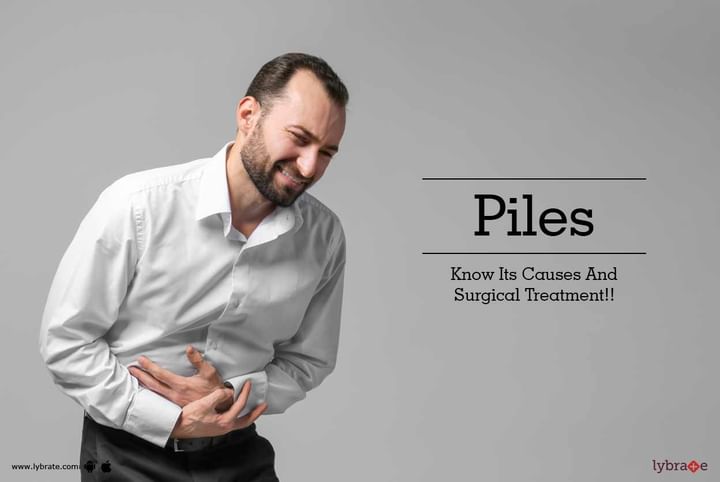Piles - Know Its Causes And Surgical Treatment!!
Piles are inflamed masses, clumps, or cushions of tissue in the anal canal. Also called haemorrhoids, piles can be a very unpleasant condition to live with.
However, the fact is that we all have some amount of inflammation in our anal canal tissues. But it’s only when the haemorrhoids become too inflamed that symptoms occur and this is when you are diagnosed as having piles.
The size of piles is variable and they can be found inside or outside the anus.
Internal hemorrhoids typically occur from 2 to 4cm above the opening of the anus. They are the more common ones and are divided into four grades.
- Grade 1 – Less inflammation occurs and it’s usually inside the lining of the anus. These piles are invisible.
- Grade 2 – These are larger hemorrhoids but are inside the anus. When passing stools they can get pushed out, but return back into the anal canal unaided.
- Grade 3 – These are called 'prolapsed hemorrhoids' and appear outside the anus. They can be pushed back into the anal canal with a finger.
- Grade 4 - These hemorrhoids cannot be pushed back and need treatment in the form of surgery as they are large and hang outside the anus all the time.
External piles occur on the outside edge of the anus and are called perianal hematoma.
Symptoms and Diagnosis
- You may feel a hard lump around the anus. And this consists of coagulated blood which is painful
- A feeling of fullness even after going to the toilet
- Bright red blood discharged after a bowel movement
- Itchiness around the anus along with redness and soreness
- Mucus discharge while defecating
- Pain while defecating
Causes
Piles occur due to chronic constipation and diarrhoea, lifting heavy weights, pregnancy or straining during defecation.
Treatment
Piles are often not serious and disappear without any treatment and usually with the help of lifestyle changes like drinking more water, cutting down on caffeine, eating more fiber etc. Just 10% of patients consulting a doctor for piles require surgical treatment. And surgery may be necessary for grades 3 or 4 hemorrhoids only.
Surgical Procedures-
BEIM technology - no cut, no suture, no wound, same-day discharge!
- Hemorrhoidectomy – This involves removing the excess tissue that is causing the bleeding. This is an effective procedure for treating grades 3 and 4 hemorrhoids but it can cause complications like difficulty passing stools, as well as urinary tract infections.
- Haemorrhoid stapling – The blood flow is stopped from reaching hemorrhoid. It is less painful than a hemorrhoidectomy, but it comes with risks like hemorrhoid recurrence and something called a rectal prolapse in which a part of the rectum pushes out of the anus.
It is advised to get yourself treated as leaving piles untreated can increase the risk for gangrene and anemia due to long –term blood loss. If you have any query questions then you can consult General Surgeon in Pune City and get answers instantly.



+1.svg)
